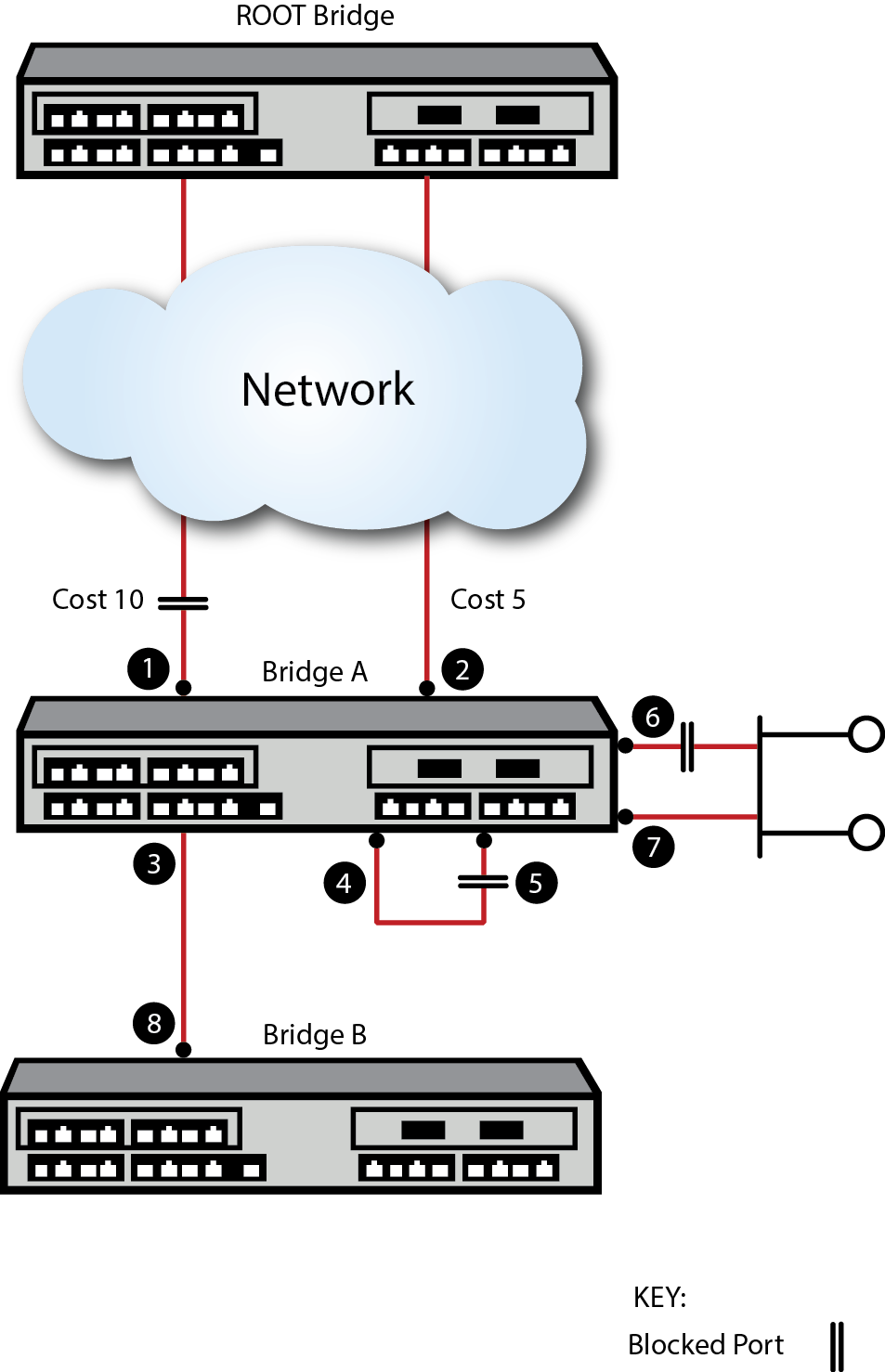Ports in a Spanning Tree configuration are assigned one of four roles: root, designated, alternate, or backup. The figure below presents an overview of Spanning Tree port roles.

| 1 | Port 1, Bridge A, Alternate Port | 5 | Port 5, Bridge A, Backup Port |
| 2 | Port 2, Bridge A, Root Port | 6 | Port 6, Bridge A, Backup Port |
| 3 | Port 3, Bridge A, Designated Port | 7 | Port 7, Bridge A, Designated Port |
| 4 | Port 4, Bridge A, Designated Port | 8 | Port 1, Bridge B, Root Port |
All ports which act as edge ports take on the designated port role. If the bridge has been elected root, all ports connected to ports on other bridges are also designated ports.
On non-root bridges, Spanning Tree identifies ports which provide a path to the root bridge and selects the best path among these as the root port as described in Paths to Root (Spanning Tree Port Role Overview, callout2). There may be only a single port providing a path to root, in which case that is the root port and the remaining ports are designated. If there are other ports providing a path to root, these ports are selected as alternate paths. Should the root port become disabled, one of the alternate ports will be selected as the new root port (Spanning Tree Port Role Overview, callout 1).
A port which is not a designated port, but is connected to another port on the same bridge (Spanning Tree Port Role Overview, callout 5) or connected to a shared LAN on which this bridge already provides a designated port (Spanning Tree Port Role Overview, callout 6), takes the role of backup port. In the shared LAN example it may take over as designated port if the original designated port is disabled.
All operational ports which are not root, alternate or backup are designated ports. These ports provide a path to the root for attached devices.
Spanning Tree Port Roles provides a summary of STP port roles.
Spanning Tree Port Roles
| Port Role | Description |
|---|---|
| Root | The one port that is used to connect to the root bridge. It is elected based on its least “path-cost” to the root bridge and is forwarding traffic. |
| Alternate | Any redundant upstream port that provides an alternate path to the root bridge (other than the root port). Alternate ports are set to blocking. |
| Designated | Any downstream port that provides a path back to the root bridge for a downstream bridge. This port is forwarding traffic. |
| Backup | A port that acts as a redundant designated port on a shared LAN. Backup ports are set to blocking. |

 Print
this page
Print
this page Email this topic
Email this topic Feedback
Feedback